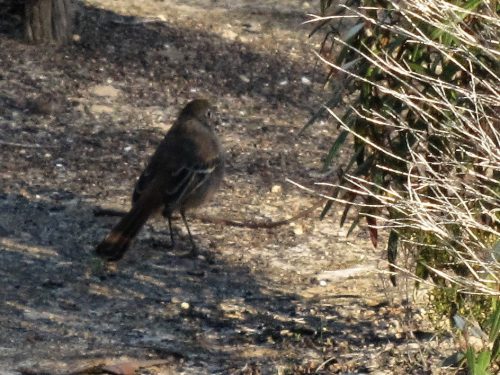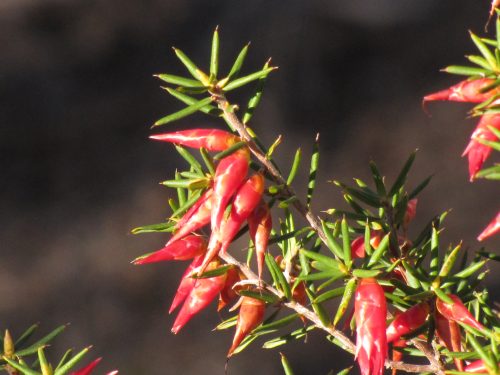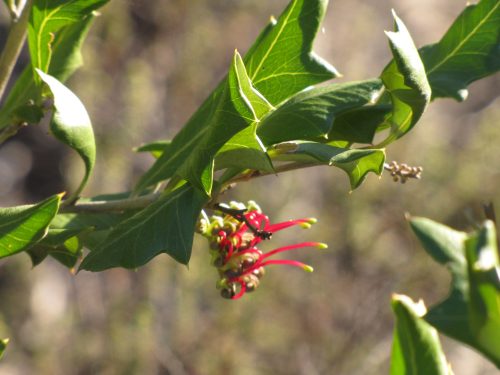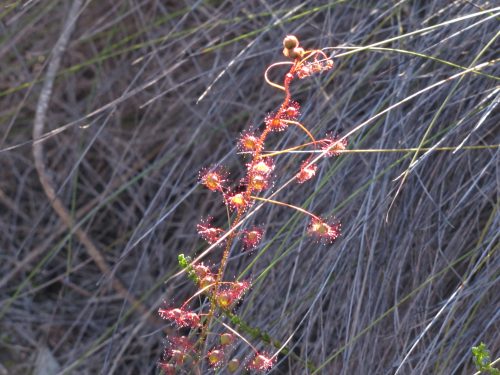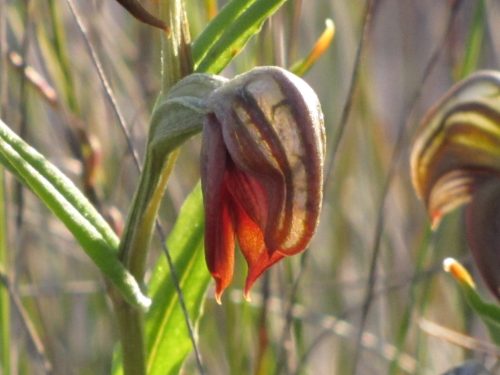A visit to Monarto Conservation Park
A few months ago my wife and I paid a visit to the Monarto Conservation Park in South Australia. This park is south-east of Adelaide and south-west of Murray Bridge where we live. It is about a twenty-minute drive from home. The park is mainly mallee scrub but it contains a good range of small and medium-size native wildflowers, some of which I have shown in the photos below.
On the day we visited, I did not see or hear all that many birds. This is not unusual; some days are like that and very few are seen, while other days you don’t know where to look first – there are so many birds to watch. On this occasion, the only bird I managed a reasonable photo of is the Southern Scrub-robin shown in the photo above. I have found this species to be a somewhat shy bird that skulks in the undergrowth. I followed this individual for about five minutes before it disappeared from view. I could hear it – and others – calling from time to time, but none of them came out in the open to enable a better shot.
This park boasts a wide range of native Australian wildflowers. There always seems to be something flowering, so honeyeaters are common in the park. One can also expect to see, or hear, both types of Pardalote, several species of pigeons, parrots and lorikeets, as well as the elusive Shy Heathwren. Fairy-wrens are also common in the park, as are several species of birds of prey, usually seen soaring overhead. You can also see Australian Magpies, Grey Currawongs, Little Ravens, Grey Butcherbirds and several kinds of swallows.
Access to the park is via Ferries-McDonald Road, a sealed road off the South-eastern Freeway. There is a carpark on the right as you travel south. There are no facilities in or roads through the park, but there is a well-defined walking track starting at the carpark. This is an easy 45-minute walk through a variety of habitats in the north-eastern corner of the park. All of the photos featured today were taken along this walking track in early July of 2017.
Lunch time by the beach
After our walk down Lady Carrington Drive we drove south through Royal National Park. This drive took us up to the top of the ranges in this part of the park. The change in vegetation over a very short distance was very interesting. From towering gum trees we suddenly found ourselves in gum trees not much more than head high with a very interesting under-story of low heath type plants. There were very few stopping points and my wife was disappointed we didn’t really have the time to spend exploring some of the walking tracks leading off the main road. We are already planning our next trip here.
At one point along this road we took a detour to a locality known as Wattamoola. This road terminates at a picnic ground where we had a delightful lunch looking out over the beach below and the Pacific Ocean out to sea. I didn’t do much birding here but did check out the large number of Pied Currawongs fussing around in nearby bushes. There seemed to an unusual congregation of them, probably twenty or more and calling incessantly. I assume this could have been mating behaviour, but, being relatively unfamiliar with the species I’m not sure.
Several Australian Magpies paraded the picnic grounds and about eight Silver Gulls were on the beach. No other water or sea birds were seen which is disappointing. I really haven’t concentrated on sea birds at all this trip because views of the sea have been very infrequent. As we left a Crested Pigeon flew past.
On the road back out I did make a concession to my plant loving wife. We stopped in a safe roadside spot fro ten minutes to photograph some of the wildflowers. The only extra species added to this locality during the stop was a single New Holland Honeyeater.
